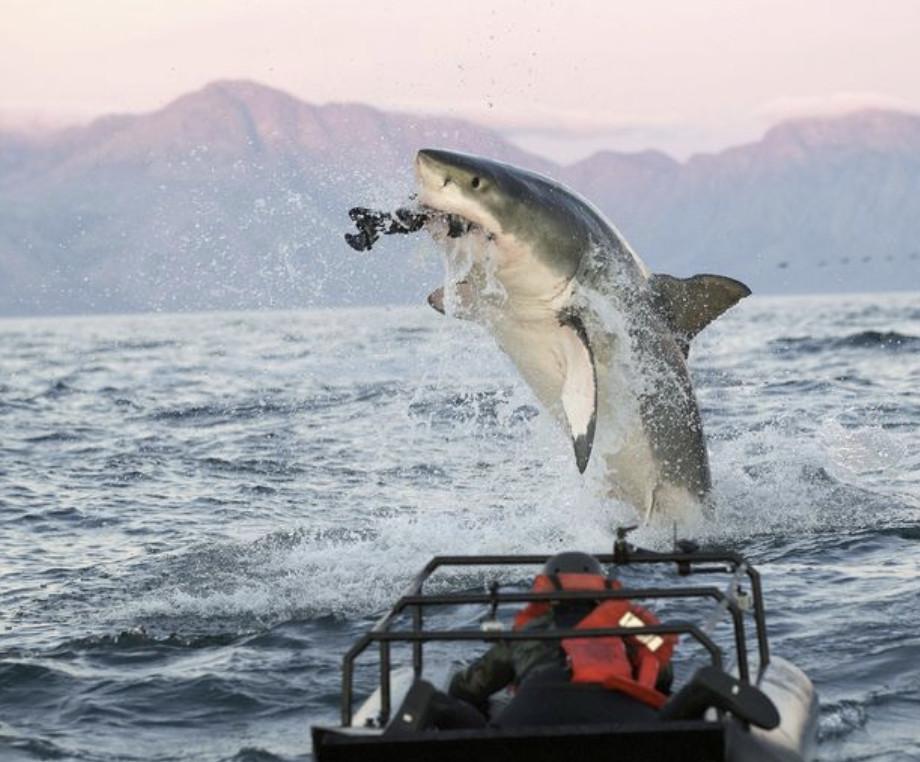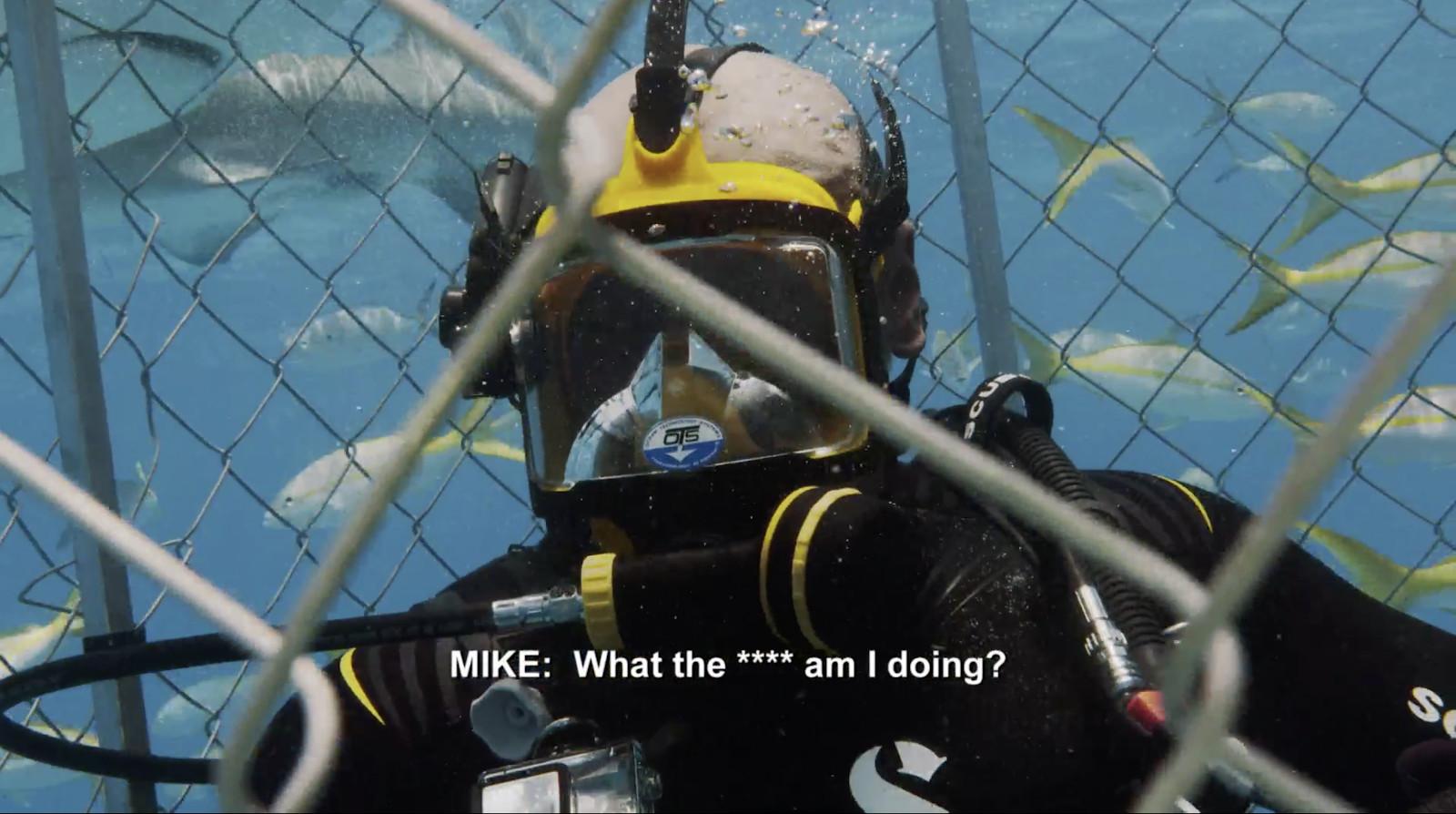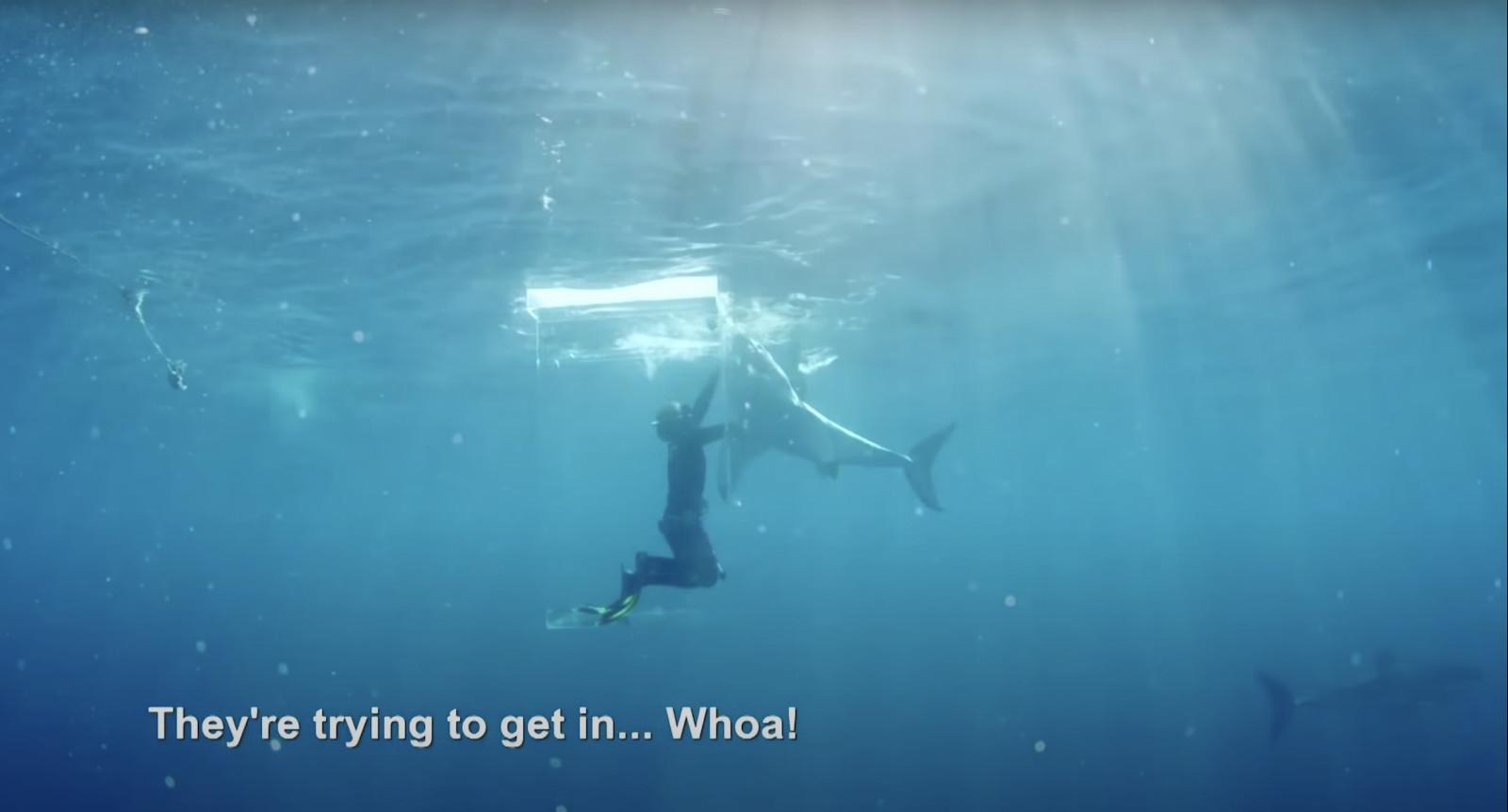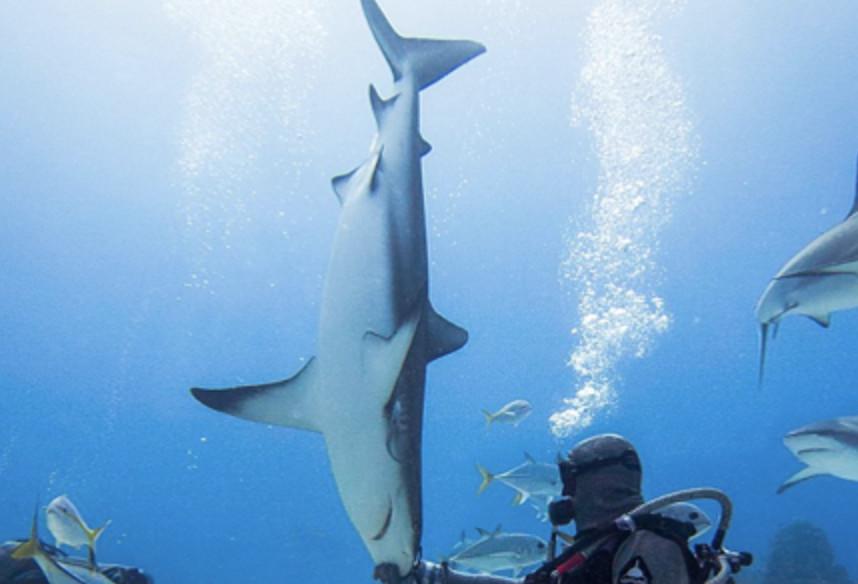As someone who grew up with multiple shark stuffed animals, the creation of Discovery Channel’s Shark Week was a big deal. It was an annual Super Bowl featuring players with razor-sharp teeth and huge dorsal fins; a whole week of programming celebrating some of the coolest creatures on the planet. It was a highlight of my summer, and make no mistake, Shark Week is still very popular. The annual specials remain the longest-running cable television program in history, in part by evolving with the times.
But just like learning that Ellen DeGeneres is not actually a nice person, we have to accept an uncomfortable truth about Shark Week: It’s not great. Since beginning in the late ’80s, the series has made a sharp turn away from educational specials and toward trashy entertainment—stoking fear of sharks more than informing the public about what makes them unique predators that we need to protect from extinction.
Nevertheless, Shark Week’s imprint on popular culture—and people’s perception of sharks—is unquestionable. And so to mark another year of specials, highlighted by Mike Tyson squaring off against countless reef sharks, Megan “The Meg” Schuster and I went through the Discovery Channel archives in order to hand out some Shark Week superlatives. We’ve been on the official Ringer shark beat for years, and to be honest, we’re probably more informed about these creatures than the decision-makers on half of the network’s specials. Let’s put on our wetsuits and dive in. —Miles Surrey
Most Anticlimactic Event
Surrey: There’s nothing that epitomizes Shark Week’s pivot from informational programming to schlocky entertainment more than the tease of Michael Phelps swimming against a great white shark. With the way that Discovery Channel billed this can’t-miss event, literally titled Phelps vs. Shark: Great Gold vs. Great White, you’d be forgiven for assuming they actually sent a highly decorated Olympian into shark-infested waters for a historic race—and, perhaps, a fight for Phelps’s own survival.
To be clear, I didn’t really want Michael Phelps to get attacked by a shark, but what we got from Shark Week barely qualifies as television. There was a ton of buildup for a simulated race proving that, unsurprisingly, one of the ocean’s apex predators is faster than an Olympic swimmer. While Phelps only lost by a couple of seconds in the 100 meter heat, the result was inevitable. Great whites have been clocked going 25 miles per hour; you’re not gonna get any human going that fast in the water unless they’re on a Jet Ski.
Considering you could distill this intentionally misleading and hyped-to-death event with a single clip, well, it’s hard not to think of this anticlimactic race as Shark Week’s equivalent of The Decision. So no matter how much Phelps campaigns, nobody cares for a rematch.
Most Athletic
Megan Schuster: This may be an unpopular take, but it needs to be said: Air Bud walked so that Air Jaws could swim.
If you’ve never caught one of Shark Week’s many Air Jaws specials, first let me say how dare you, and second, you’re in for a treat. Air Jaws tackles the phenomenon known as breaching, where a white shark will dive down deep in the water, wait for a seal to swim out for food at the surface, then rocket straight up to hit the seal and throw themselves up out of the water in the process. The end result looks like this:

Now, the Air Jaws team is animal friendly, so they use only decoy seals—but these decoys have gotten pretty advanced over the years. They can measure the force that they’re hit with, the speed that the shark is traveling, and more. If you’ve ever doubted the athleticism of these dinosaur descendants, I invite you to look at the photo above and think again.
Least Enthusiastic Shark Swimmer
Surrey: Sometimes Shark Week specials try to ramp up the drama by underscoring how dangerous it can be to swim with sharks, and while the inherent risks shouldn’t be ignored, you don’t really feel nervous when you watch divers who do this for a living. But that’s not quite the case for Mike Tyson, whose 2020 Shark Week special feels like a very specific brand of torture. For Tyson vs. Jaws: Rumble on the Reef, the legendary boxer is absolutely not playing up the fear for the cameras. He literally vomits before going for one of his shark dives, and can’t even feign enthusiasm for this semi-educational program. He spends most of the time on the show questioning his life choices and swearing.
It’s all very relatable:

To Tyson’s credit, he eventually interacts with sharks outside of a cage, and does a decent job of handling dozens of reef sharks swimming around him. (He even jokes, once the crew gets back on the boat, that they should tackle great whites next.) But the tape doesn’t lie, and there’s clearly nothing Tyson would rather do less than step into the deep end again. I hope the check was worth it.
Most Likely to Need a Parental Advisory Warning
Schuster: Here at The Ringer, we like to avoid working blue. (OK, that’s a bald-faced lie, but bear with me anyway.) When we talk and write about sharks, we usually focus on their animal nature: What they eat, where they swim, why they might come into contact with humans. One thing that we don’t typically delve into (I’m so sorry) though, is an important one: their sex lives. Lucky for us, Shark Week is all over that beat—and has been for some time.
As a middle-school-aged child, I stumbled across one of Discovery’s Science of Shark Sex specials in my Shark Week viewing, and let’s just say it was … pretty unforgettable. Before you call me Chandler Bing, let me explain that this is because shark sex is high-key violent. I’ll save you the gory details (unlike Discovery), but suffice it to say that there is little-to-no romance involved in the creation of teeny toothy creatures.
Despite that harsh reality, Discovery’s savyy marketing department knows that sex sells—even if it’s shark sex. So they keep bringing these programs back, and even have one scheduled to run this year. Just look at the promo, released in July, which caused the Daily News to write an article titled: “Discovery’s Shark Week really wants you to know that sharks have two penises.”
They really, really want you to know that.
Least Reputable Programming
Surrey: When we talk about Shark Week—some pun intended—jumping the shark, there’s no better example of there being too much nonsense than there being not one, but two pieces of docufiction theorizing how megalodons might still exist today. This is the oceanic equivalent of the History Channel doubling down on Ancient Aliens—going full megalodon truther on the Discovery Channel is straight-up irresponsible. And for whatever it’s worth, the megalodon “evidence” in the sequel to Megalodon: The Monster Shark Lives is extremely flimsy.
(I’ll save you a click: When I chatted with a marine biologist about Aquaman a couple of years ago, he took a quick swipe at anyone who thinks megalodons are out there. Short answer: NO, YOU IDIOTS.)
Save this nonsense for The Meg, which nobody would mistake for educational programming. Like, I get it, megalodons are very cool: They’d eat great whites as little appetizers. But Discovery can still wow viewers by keeping all things megalodon in the realm of fact and science: They’re extinct, they were an impressive species, and their jaws were unconscionably huge.
Most Australian Program
Schuster: Three words: Shark-Croc Showdown. That title basically just conjures dingos, Fosters cans, shrimp on the barbie, and muscled dudes wrapped in khaki shorts who are ready to wrestle some wildlife.
Like many Shark Week specials, the promise of Shark-Croc Showdown packs more punch than the result. There’s a lot of B-roll of the sharks and crocodiles separately, and plenty of buildup to what is supposed to be the titular “showdown.” But it turns out the two creatures coexist rather peacefully in the waters off Australia, and generally come into close proximity only when they’re forced to by TV producers. (It’s not great when a Shark Week special starts to sound like The Bachelor.) Still, the whole thing is a remarkably Australian experience, and if you’re down to spend an hour combing the outback looking for a giant monster fight, it’s not a bad ride.
Best Crossover in the Discovery Channel Cinematic Universe
Surrey: With all of Discovery’s shamelessly misleading shark content, thank god for Mythbusters. A show all about unpacking myths and urban legends makes for a perfect crossover event for Shark Week, where shark fact is never too far off from shark fiction. (As long as we aren’t discussing whether megalodons exist.) The Mythbusters crew always keep it weird, like the time they created an animatronic shark to test how easily you’d be able to poke a great white’s eye if you were trapped in its jaws. If that’s not up your alley, what about trying “shark repellent” in shark-infested waters?
Nerds rock. This is what Shark Week should be all about.
Biggest Real-Life Shark
Schuster: Deep Blue first hit TV screens in a 2014 Shark Week special titled Jaws Strikes Back, and she’s been a point of public fascination ever since.
First seen in the waters around Guadalupe Island in Mexico, this 22-footer has since been spotted in Hawaii and other locations throughout the Pacific Ocean. Deep Blue is believed to be the largest great white shark ever recorded on film (most adult female sharks fall into the 15-16 foot range), and the largest in the entire Pacific. She has a cult following within the Shark Week fan community, even getting her own special in 2019, and she’s become a celebrity among shark divers. “Not a trip goes by without someone asking about this particular shark,” Shark Diving Xperts wrote on their blog, “and her name is now famous in the world of shark diving. Everyone wants to catch a glimpse of her!”
And why wouldn’t they? She’s the closest real-life thing to the shark from Jaws (a 25-foot male great white shark, which is just a biological impossibility), but she’s also nothing like the Jaws shark. For one, divers who’ve been near her describe her as having a calm, unbothered aura. And two, she’s pretty elusive. For all her celebrity, she’s been spotted only a handful of times in the past seven years. The legend of Deep Blue is one of the best things to ever come out of Shark Week, and as much as I love to see her on the screen, I hope to never encounter her in open water.
Closest (Non-Lethal) Encounter
Surrey: There are many worthy candidates—getting a little too close to sharks is part of the territory—but none could’ve been more disastrous, or avoidable, than what happened in Island of the Mega Shark. (Minor spoiler: The island in question is Guadeloupe, do not swim there.) The crew on the series use a plexiglass shark cage, one that the island’s great whites are drawn to. That makes for awesome footage, but there’s just one problem: The door to the glass cage won’t close.

Not ideal, especially when the solution is for the diver (named Dickie) to try to keep it closed manually with a bungee cord while being circled by several sharks. (Dickie is just daring the sharks to taste-test his arm.) I can’t decide if the crew on Island of the Mega Shark being so nonchalant about one of their members in serious peril is a testament to their calm professionalism or sheer recklessness, but if nothing else, this would be ripe material for a horror movie.
Creepiest Phenomenon
Schuster: I am not a person who believes in hypnosis. I don’t fault others for buying into it, and I’ve even “witnessed” people becoming hypnotized, but I’ve pretty much always thought it was a bunch of mumbo jumbo. Then, while watching Shark Week, I learned about the concept of tonic immobility, and my worldview shifted a bit.
Tonic immobility, or “tonic” as it is commonly called on specials, is a “trance-like state” that sharks can enter naturally or when the sensory pores on their noses are stimulated. The practice is most commonly used by researchers to study smaller sharks without the help of drugs or other agents, but the folks on Shark Week take it a few steps further.

Watching a shark enter tonic is awe-inspiring—this giant predator rendered completely still and at ease with just the touch of a person’s hand. Granted, to achieve tonic, researchers have to be close enough to these animals to touch the front of their heads, therefore getting right up against the teeth, so this isn’t a thing I’d recommend trying at home. But the results are beautiful nonetheless.
